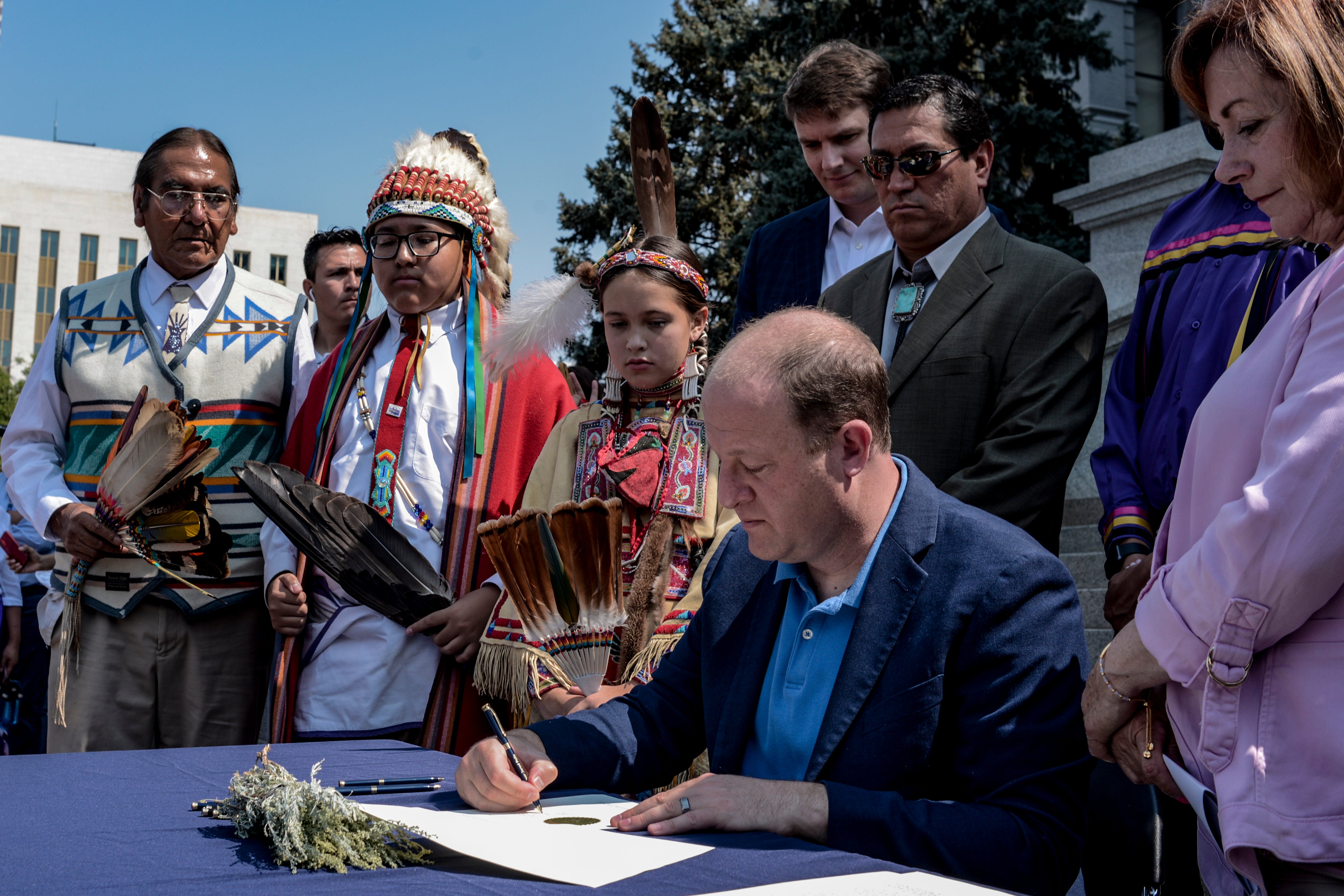Colorado governor voids 1864 order to kill Native Americans
Colorado Gov. Jared Polis has rescinded a 19th century proclamation that called for citizens to kill Native Americans and take their property

Your support helps us to tell the story
From reproductive rights to climate change to Big Tech, The Independent is on the ground when the story is developing. Whether it's investigating the financials of Elon Musk's pro-Trump PAC or producing our latest documentary, 'The A Word', which shines a light on the American women fighting for reproductive rights, we know how important it is to parse out the facts from the messaging.
At such a critical moment in US history, we need reporters on the ground. Your donation allows us to keep sending journalists to speak to both sides of the story.
The Independent is trusted by Americans across the entire political spectrum. And unlike many other quality news outlets, we choose not to lock Americans out of our reporting and analysis with paywalls. We believe quality journalism should be available to everyone, paid for by those who can afford it.
Your support makes all the difference.Colorado Gov. Jared Polis on Tuesday rescinded a 19th century proclamation that called for citizens to kill Native Americans and take their property, in what he hopes can begin to make amends for “sins of the past.”
The 1864 order by Colorado’s second territorial governor, John Evans, would eventually lead to the Sand Creek massacre, one of Colorado's darkest and most fraught historic moments. The brutal assault left more than 200 Arapaho and Cheyenne people — mostly women, children and elderly — dead.
Evans' proclamation was never lawful because it established treaty rights and federal Indian law, Polis said at the signing of his executive order on the Capitol steps.
“It also directly contradicted the Colorado Constitution, the United States Constitution and Colorado criminal codes at the time," the Democratic governor said to whoops from the crowd.
Polis stood alongside citizens of the Southern Ute, Ute Mountain, Cheyenne and Arapaho tribes, many dressed in traditional regalia. Some held signs reading “Recognize Indigenous knowledge, people, land” and “Decolonize to survive.”
Ernest House Jr., who served as executive director of the Colorado Commission of Indian Affairs under former Gov. John Hickenlooper said Polis' order is important to the state's government-to-government relations with tribes, the acknowledgment of history, and a movement toward reconciliation.
“I think there's oftentimes the general community think of American Indians as the vanishing race, the vanishing people. And I think it starts with things like this," said House, a citizen of the Ute Mountain Ute Tribe. "It gives us a place that we were important and that our lives were important.”
A broader push for reconciliation and racial reckoning has occurred across the U.S. in the wake of George Floyd’s death at the hands of police, including efforts to remove Confederate monuments and statues of slave traders, colonizers, conquerors and others. Some states, including Colorado, have banned Native American mascots in schools.
That movement coupled with renewed attention to Evans’ history also prompted Polis to create an advisory board to recommend name changes for the highest peak in the Front Range of the Rocky Mountains, known as “Mount Evans.” Discussions are taking place within the Colorado Commission of Indian Affairs to choose “more culturally sensitive names,” said Alston Turtle, a councilman with the Ute Mountain Ute Tribe.
Evans governed the territory of Colorado during three years of the Civil War, from 1862 to 1865. He resigned after the Sand Creek massacre happened under his order.
Col. John Chivington led the Nov. 29, 1864, slaughter. He and his soldiers then headed to Denver where they displayed some of the victims’ remains.
The massacre is one of several long-ago terrible events that many Americans don’t know about, such as the Snake River attack in Oregon in 1887, where as many as 34 Chinese gold miners were killed. Others occurred within the lifetimes of many Americans living today, like the 1985 bombing by Philadelphia police of the house that headquartered the Black organization MOVE, killing 11 people.
Rick Williams, a Lakota and Cheyenne descendant who studies Native American history, found the original Evans’ order while researching the aftermath of the Fort Wise Treaty of 1861, in which U.S. government representatives met with Cheyenne and Arapaho leaders to establish a reservation along the Arkansas River in eastern Colorado. Williams said only 10 people signed the agreement.
“The next two years, it was hell for Indians because they didn’t sign the treaty, and they tried to kill as many of them as they could. And when that didn’t work, (Evans) issued an order to declare war,” Williams said.
One of Evans’ orders deemed Native Americans “enemies of the state,” and the second called for Colorado citizens to kill and steal from them, Williams said.
___
Nieberg is a corps member for the Associated Press/Report for America Statehouse News Initiative. Report for America is a nonprofit national service program that places journalists in local newsrooms to report on undercovered issues.